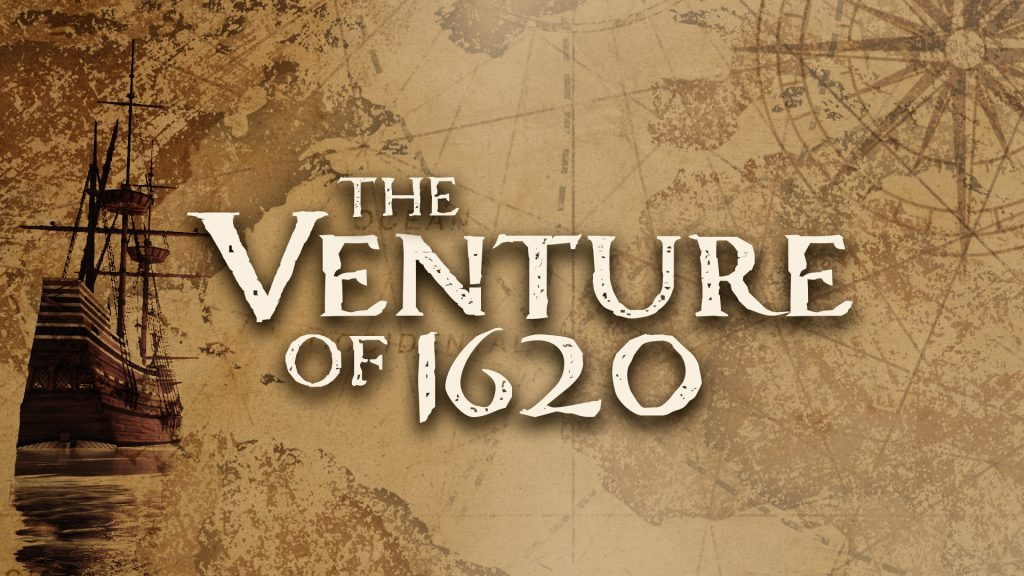


The Venture of 1620 is the unbelievable, yet true story of the Pilgrims escape from religious persecution to the New World. Through the story of William Bradford, William Brewster, and other dedicated Pilgrims comes a strong reminder of the need to remember our posterity and be thankful for the price that was paid for our religious freedoms.
Camp will be at The Logos Theatre (80 School Street Taylors, SC)
The audition allows us to put each camper in a role for the production. The audition does not determine whether a camper is in the camp.
The discount for families with 3 or more children will be applied after the enrollments are received.
Within 2 or 3 days of submitting your registration, you will receive more information about the audition.
CAMP INFORMATION
Dates
Week #1: June 9 – 13
Week #2: June 16 – 20
Week #3: June 23 – 27
Times
Mon. – Wed.: 9AM – 3PM
Thu. – Fri.: 9AM – 9PM
Performances
Cost
$220
* Camp fees also include a camp t-shirt.
**For families with 3 or more children in the play, the third child is half off.
Ages
13 and up
Auditions
Only Video Auditions Accepted
*All audition videos should be submitted by 10PM on April 15th.
**Audition Information will be emailed with your registration confirmation.
LODGING INFORMATION
Food and lodging are available at an additional charge for the week of camp. Food will be provided by a local catering company.
Times
Arrival:
7AM – 9AM on Monday
Due to the small turn around time between camps, all dormitories will closed before Monday at 7AM and Friday after the performance.
Schedule
This is a tentative schedule for the first 3 days of camp:
9AM – 12PM
Rehearsal/Crews
12:15PM – 1:15PM
Lunch
1:15PM – 3PM
Rehearsals/Crews
3PM – 5:30PM
Activities
5:30PM
Supper
6:30PM – 9:45PM
Activities
10PM
Dorm Devos
11PM
Lights Out
Cost
$240
*Room and board is an additional $240.
**Dorming space is limited.
Students must enroll in “Venture of 1620 Summer Camp (with food and lodging).”